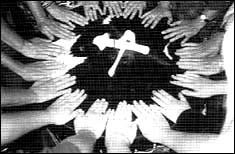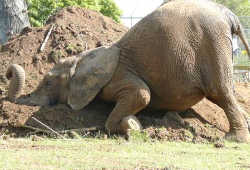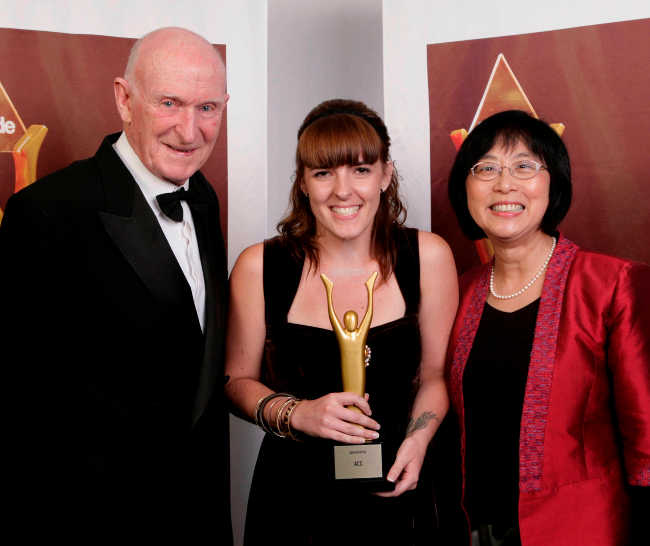Presto – 17/3/00
Women’s Sacred Mysteries – A Ritual Performance
|
|
| Hands on the Drum Photo source Sue Beezley |
On Saturday the 25th March 6pm, the “Women’s Sacred Mysteries” will perform in Cathedral Square. All welcome to attend. It is FREE. Bring a cushion.
Presto talks to Sue Beesley and finds out what’s going on.
What are the sacred mysteries? Those refer to the effects that a woman’s body and its cycles have on her soul or spirit, and in turn on the spirit of her family and community. This is the effect when the cyclic monthly bleeding that mirrors the moon’s cycles ceases, and accumulates. This is the essence of creating new life both in pregnancy and menopause.
So this is all about menstruation? Yes – and much more. When women gather together and talk about how they first bled, had babies, buried their dead, experienced menopause – they agree that they are the profound enormous, important experiences of their lives. Women carry huge emotions, joys, griefs, longings, losses and in our present day society there’s nowhere to go at these times, to be seen in one’s truth, to be validated and heard. Many indigenous peoples still have women’s houses where communal rites and ceremonies occur to honour, mark and support these important wisdom giving women’s experiences. We are bringing out truth into the open.
Why do they need honouring? Because they have enormous impact on the life of the tribe or community. It makes good sense to honour the amazing gift of life and life giving and nurturing – so that women feel honoured, loved and bring forth the most loved and nurtured families and communities.
Do you mean women shouldn’t work? All women work whether it’s paid or unpaid, and women created societies at workplaces as well as in the home. However all women bleed – and this is largely ignored in our society. Bleeding is seen as soiling, unhygienic, something to be hidden. It’s actually the most important work women do, and this huge experience is reduced to a tampon on TV ad with blue water!! It’s okay to show blood of war but not of women.
But most women wouldn’t want to ‘show’ their periods would they? Exactly. Women have been conditioned over centuries to hate their blood. Our society says that male bloodletting in war is honourable even though it is death bringing. Pre Christian societies honoured women’s blood letting as natural and life giving. This makes sense to us. There is abundant evidence to show that societies from 30 000 B.C celebrated the life-giving Creatrix. Bloodrites were originally powerful transformative mysteries. Menstrual blood was sacred, poured onto the crops, symbolic of the woman’s and earth’s reproductive powers and fertility.
What exactly will we see in the performance ritual? It’s about a group of New Zealand women whose tap roots are deep in Europe expressing our remembered wisdom. We’ve journeyed for three years together, across the land of New Zealand recreating ourselves in myth and image, song and dance. We’ve each made our own masks, breastplates, cloaks and ancestral images. Using these we tell the archetypal story of Everywoman and share some of our own individual experiences.
Is this only for women then? No – not at all. Although this is about women’s transformation it impacts on everyone, and everyone is invited. In fact everyone must eventually be involved to integrate these wisdoms into our community.
Are you an actress? No, some have experience in dance, theatre and professional singing. But most of us are gathered because we need to tell our stories and be visible, to bring ourselves into the community of Christchurch.
So it’s not theatre? Well, actually I believe this is how people used to express their deep, profound passionate selves and their spirit in their communities. This was where theatre began. We are celebrating our lives in the centre of town and with our community. This makes us whole and is a sacred act. My old drama teacher used to say
"There’s more drama in real life darlings than you’ll ever find on any stage…"
This article is republished from Presto magazine available for free on dead tree around Christchurch, New Zealand, with the permission of the authors.





